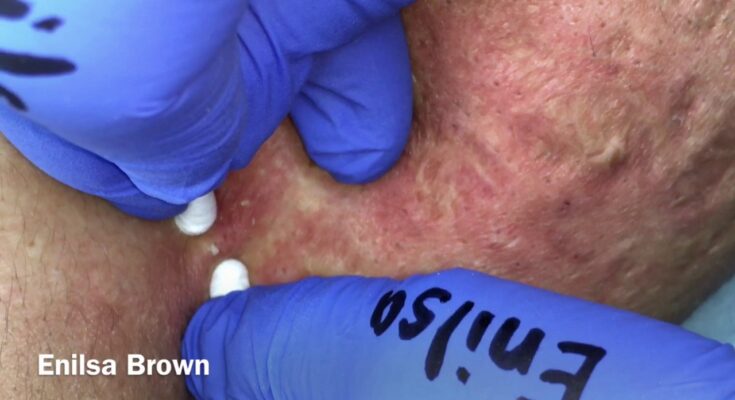Acne on the back, often referred to as “bacne,” can be just as frustrating as facial acne, but it can be treated effectively with the right approach. Here’s a guide to managing and treating back acne:
1. Cleansing
- Use a gentle cleanser: Choose a mild body wash that won’t strip your skin of its natural oils. Look for products with salicylic acid or benzoyl peroxide, which help prevent clogged pores and treat acne.
- Shower regularly: After workouts or sweating, shower immediately to cleanse the skin of oils and dirt that may contribute to acne.
2. Exfoliation
- Exfoliate your back: Regular exfoliation can help prevent clogged pores. Use a body scrub with gentle exfoliating ingredients like sugar or salt, or an exfoliating brush to remove dead skin cells.
- Salicylic acid pads: These are an easy way to exfoliate the back without scrubbing. Salicylic acid is a beta hydroxy acid (BHA) that helps to unclog pores and reduce inflammation.
3. Topical Treatments
- Benzoyl peroxide: This is a popular treatment for acne and can help reduce bacteria and inflammation. It’s available in various forms, such as gels, creams, or body washes.
- Salicylic acid: Salicylic acid works as a mild exfoliant, helping to keep pores clear and reducing inflammation.
- Retinoids: A topical retinoid, like adapalene, can help prevent pores from clogging and promote cell turnover.
- Tea tree oil: This natural remedy has antimicrobial properties and may help soothe acne. Dilute it with a carrier oil and apply it to affected areas.
4. Lifestyle Adjustments
- Wear loose-fitting clothing: Tight clothing can trap sweat and oil on the skin, exacerbating acne. Choose breathable fabrics like cotton.
- Avoid touching your back: Try not to touch your back frequently with your hands, as this can transfer oils and bacteria to the skin.
- Wash your sheets regularly: Dirty sheets and pillowcases can harbor bacteria, contributing to acne flare-ups. Make sure to wash your bed linens and towels regularly.
- Maintain a healthy diet: While diet isn’t a primary cause of acne, certain foods can trigger breakouts in some people. Try reducing your intake of sugary and greasy foods.
5. Professional Treatments
- Chemical peels: Dermatologists can apply chemical peels to help exfoliate the skin and reduce acne.
- Laser therapy: Laser treatments, such as those using blue light, can target bacteria on the skin that contribute to acne.
- Prescription treatments: If over-the-counter treatments aren’t effective, your dermatologist may prescribe stronger medications, such as oral antibiotics or retinoids.
6. Avoid Picking or Squeezing
- Picking at acne can cause further irritation and lead to scarring. Try to avoid touching your back, and if you need to pop a pimple, it’s best to wait until it’s ready or visit a dermatologist for professional extraction.
If your bacne doesn’t improve with over-the-counter treatments, or if it’s particularly severe, it’s worth consulting a dermatologist who can provide tailored treatments or prescriptions.



